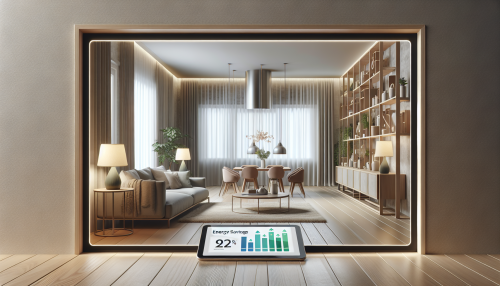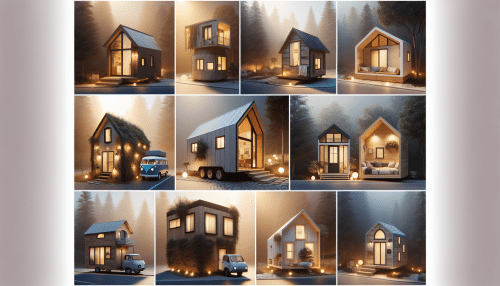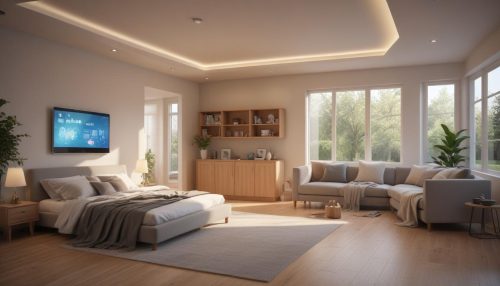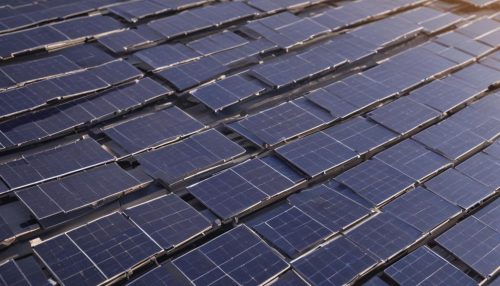Smart Home Upgrades You’ll Want in 2025
Olivia Morgan August 25, 2025
Discover which smart home upgrades and trends are gaining attention in 2025. This guide explores essential features, device setups, safety enhancements, and energy-smart solutions shaping homes—no overpromises, just reliable info for your living space.
Understanding the 2025 Smart Home Landscape
With rapid advances in connected technology, the concept of a smart home upgrades is transforming in 2025. Voice control has become more efficient, and automated routines are no longer a luxury for a select few. Now, voice-activated assistants and home automation hubs play a vital role in streamlining daily routines. In this evolving landscape, homeowners want devices that integrate smoothly, provide security, conserve energy, and add genuine value to their lives. Gone are the days when Wi-Fi lights were enough—you can expect more advanced and user-centered experiences quickly becoming mainstream.
There is a noticeable shift toward interoperability. In 2025, smart home devices from different brands are designed to connect more easily, supporting unified household management through features like Matter compatibility. Instead of multiple apps for different tasks, many opt for platforms that allow them to control heating, lighting, and even indoor air quality from one dashboard. This streamlining minimizes frustration and enables both beginners and tech-savvy homeowners to enjoy a smart ecosystem with less complexity.
This year also brings a focus on accessibility and sustainability. Homeowners are researching how smart thermostats, intelligent sensors, and automated energy monitoring lead to lower utility costs while reducing environmental impact. Smart plumbing, leak detection, and water-saving features are becoming sought-after, especially as climate concerns shape home upgrade decisions. From simple plug-in solutions to whole-home integrations, the landscape encourages exploration and incremental improvements for every household.
Smart Security: Keeping Homes Safer in 2025
Security remains a high priority among home upgrades in 2025. Modern systems go well beyond basic alarms; now, homeowners are looking into AI-powered surveillance, smart locks, and real-time alerts. These advanced setups use facial recognition, motion detection, and geofencing to allow tailored monitoring. With options for cloud-based backups and encrypted notifications, residents have more tools to deter break-ins and monitor visitors, whether at home or away.
One popular trend is the emergence of integrated safety suites. These include video doorbells, connected sensors, glass-break detectors, and even automated lighting designed to mimic occupancy patterns. This kind of layered, proactive system helps provide peace of mind. Many residents value the flexibility of monitoring from their mobile devices, checking live video feeds, or receiving instant notifications if an unusual event is detected, making smart security both adaptive and user-centered.
Privacy and data protection remain important considerations. In 2025, smart home upgrades manufacturers are prioritizing transparency around how footage and personal information are handled, responding to real user concerns. Many choose devices that offer local storage or strict privacy policies, striking a balance between protection and convenience. For those exploring smart home upgrades, understanding these options allows informed decisions tailored to each household’s comfort level.
Energy Efficiency and Sustainability Trends
Energy-saving upgrades are at the forefront this year. As utility rates fluctuate and environmental awareness spreads, more people invest in home energy management tools. Smart thermostats, adaptive lighting systems, and window shade automation are popular because they help reduce both costs and consumption. These systems often include schedules based on occupancy patterns and the weather, which boosts overall household efficiency while supporting sustainability.
Solar integration and battery storage options are growing, thanks to easier installation and improved tech. Many households are using energy dashboards to track real-time use, spot waste, and set goals. Smart plugs, load monitors, and connected appliances also contribute, helping families better understand their energy footprint. Detailed analytics enable users to adjust their routines and maximize efficiency without impacting comfort.
Water usage is coming under similar scrutiny. Tools like smart irrigation controllers and leak detectors protect not only budgets but also the planet’s resources. Some platforms now offer suggestions for lowering water use or scheduling outdoor watering based on forecast data. These combined trends make energy-smart living approachable, meaningful, and rewarding for anyone considering an upgrade in 2025.
Intelligent Comfort and Wellness Features
Comfort and indoor wellness are entering a new era. The demand for better air quality, lighting that follows natural circadian rhythms, and even noise management is shaping smart home features in 2025. Whole-home air purifiers work with humidity sensors to adjust automatically, keeping the environment healthier with little effort required from residents. Lighting systems shift color temperatures to encourage focus, relaxation, or restful sleep.
Voice and gesture controls make adjusting environments seamless. Imagine setting a relaxing mood with a single command or dimming lights automatically as evening arrives. Smart thermostats maintain consistent temperatures, while connected shades protect interiors from heat, glare, or cold. These integrations add not only comfort but also notable energy savings, especially in climates that experience wide seasonal swings.
Wellness sensors are expanding their roles. Some homes now include CO2 monitoring, allergen detection, and proactive air exchange systems designed to support families with allergies or respiratory concerns. By combining comfort, health, and technological ease, 2025’s smart home upgrades help support easier day-to-day wellness and a safer living environment for all household members.
Choosing Devices and Designing a Connected Home
Selecting the right combination of devices is often the biggest challenge. Many weigh the pros and cons between comprehensive systems and flexible, plug-and-play devices. Compatibility with existing infrastructure, ease of install, and long-term support count for as much as flashy new features. In 2025, cross-brand and multi-platform compatibility, such as Matter standard adoption, is shaping choices for new buyers and those expanding existing setups.
Design remains an important factor. Devices that blend in with home décor or can be subtly integrated gain an edge. Minimalist interfaces, neutral color schemes, and wireless options improve overall satisfaction and make smart upgrades appealing to even the most design-conscious. As more homes shift toward open concept living, flexible device placement and minimal wiring are prioritized for both aesthetics and performance.
Long-term planning is key. Smart homes are designed not around a single device, but through layered upgrades that allow customization over time. Many start with key needs—security, lighting, or energy—and gradually expand. Modular platforms, frequent software updates, and robust online support allow easy adaptation to new tech, keeping frustration—and e-waste—to a minimum over the years.
Smart Home Challenges and Future-Proofing Your Upgrades
No system is flawless. Connectivity issues, software bugs, and shifting compatibility standards can cause unexpected headaches. In 2025, smart home upgrades forward-looking homeowners focus on future-proofing: selecting devices from brands with established update policies, flexible integrations, and visible support. These steps help protect both investment and peace of mind as the smart home market evolves rapidly.
User education is a crucial piece of the puzzle. Reading support guides, comparing user experiences, and participating in online communities helps demystify troubleshooting. It also reveals creative uses for devices—from care routines for pets to advanced automations for daily convenience. The more familiar a household becomes with the evolving features, the smoother daily living grows.
With a thoughtful approach to budgeting, device selection, and update planning, homeowners can build smart systems that provide reliable value for years to come. From intelligent lighting to water-saving tech, 2025 invites exploration. Guide your decisions with clear information, a focus on integration, and an eye toward future needs. Explore more options and let your home evolve along with your lifestyle.
References
1. U.S. Department of Energy. (2025). Energy-Saving Tips for Smart Homes. Retrieved from https://www.energy.gov/energysaver/smart-home-technology
2. Consumer Technology Association. (2025). The State of the Smart Home: 2025 Trends. Retrieved from https://www.cta.tech/Resources/i3-Magazine/i3-Issues/2025/Spring/Smart-Home-Trends
3. National Renewable Energy Laboratory. (2025). Smart Energy Management in Homes. Retrieved from https://www.nrel.gov/buildings/smart-energy.html
4. Federal Trade Commission. (2025). Smart Home Privacy and Security. Retrieved from https://www.consumer.ftc.gov/articles/smart-home-devices
5. Environmental Protection Agency. (2025). Sustainable Home Practices. Retrieved from https://www.epa.gov/greenhomes
6. Harvard Joint Center for Housing Studies. (2025). The Future of Healthy Homes. Retrieved from https://www.jchs.harvard.edu/blog/future-healthy-homes-2025





